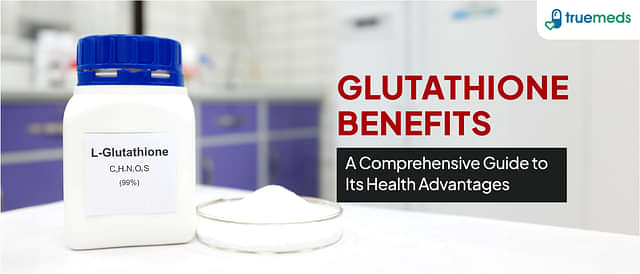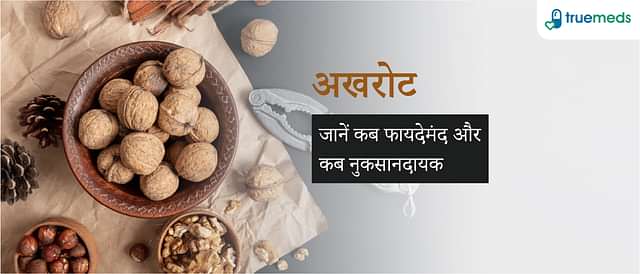Rajgira/Amaranth: Benefits, Uses, Nutrition Value and Much More!
Last updated on : 30 Dec, 2024
Read time : 10 min
What is Rajgira or Amaranth?
Amaranth (ramdana) refers to a group of grains that includes more than sixty distinct species and has been cultivated in ancient times by the Inca, Maya, and Aztec civilizations. They relied on these grains as a primary source of nutrition.
Amaranth is categorised as a pseudocereal, which means that although it isn’t strictly a cereal grain like wheat or oats, it does share a number of similar nutrients and functions. Its earthy, nutty flavour compliments a wide range of foods. This healthy grain is not only very adaptable but also naturally gluten-free and abundant in protein, fibre, minerals, and antioxidants.
Read more – Health Benefits of Eating Oats and Oatmeal
Amaranth holds a significant place in the Hindu culture. Consumption of grains is forbidden during the fasting period. That is an integral part of Hindu religious rituals. Amaranth can be used as a nutritious and tasty replacement for any type of grain.
What is Amaranth called in other languages-
- Marathi – rajgira
- Kerala – cheera
- Karnataka – harive soppu
Nutritional value in Rajgira
Though Amaranth is a pseudocereal, it is an excellent source of essential nutrients. It is a well-balanced food item with useful qualities that have been demonstrated to have therapeutic advantages.
| Nutrients | Concentration per 100 gm |
| Calories | 251 Kcal |
| Protein | 9.3 gm |
| Fat | 5.2 gm |
| Carbohydrates | 46 gm |
| Manganese | 2.1 mg |
| Phosphorus | 364 mg |
| Magnesium | 160 mg |
| Iron | 5.2 mg |
| Selenium | 13.5 mcg |
| Copper | 0.4 mg |
9 Benefits of Rajgira:
Amaranth is a pseudocereal with a high nutritional density due to its high concentration of macronutrients and micronutrients like vitamins and minerals. Essential amino acids, especially lysine, are abundant in amaranth grain, giving it excellent nutritional value.
The following is a list of some of the advantages that can be obtained by consuming this superfood:
1) An abundance of micro and macronutrients:
One cup of cooked Amaranth has 116 mg of calcium, more than 10% vitamin B, and 5.2 mg of iron. Amaranth contains manganese, which is essential for brain function and is thought to protect against some neurological diseases. It’s also high in magnesium, an important vitamin for muscle contraction. Amaranth contains a lot of phosphorus, which is good for your bones. It also has an ample amount of iron, which your body needs to make blood.
2) For a healthy heart:
Due to the phytosterols it has, research has shown that amaranth might be able to lower cholesterol. A study found that the oil of amaranth lowered “bad” or LDL cholesterol by 22% and total cholesterol by 15%. At the same time, it helps to raise the “good” or HDL cholesterol. A study on chickens showed that adding amaranth to their diets cut total cholesterol by up to 30% and “bad” LDL cholesterol by up to 70%.
Read more – Home remedies to reduce cholesterol
3) Full of fibre to keep you full:
Because each cooked cup contains 5.2 grams of dietary fibre, you can be sure that it will hold your hunger at bay for a significantly longer period of time.
4) Plenty of quality protein:
Lysine is an amino acid that is highly important to have, yet most cereals don’t have it. This plant-based food Amaranth has 9.3 grams of protein in every cup when it is consumed.
5) Weight loss supplement:
If you want to lose weight, Amaranth is a great food to incorporate into your diet on a daily basis. Amaranth, as a good source of proteins and fibre, makes you feel full and content for a long time and also assists in preserving muscle mass for a healthy metabolism when consumed in moderation. Increasing your fibre intake is a great way to reduce your weight and fat gain risk.
Read more – Ayurvedic Diet For Weight Loss
6) An iron supplement :
The iron in amaranth plays an important function in making red blood cells and is also required for cellular metabolism (there is 5.2mg of iron in one cup of cooked amaranth). When taken with a healthy vitamin supplement, it improves the body’s ability to absorb iron, making it a useful tool in the fight against anaemia.
7) Health-promoting Antioxidants:
Natural substances called antioxidants to aid in defending the body from harmful free radicals. Amaranth is a good source of antioxidants that are good for your health and can help shield you against many degenerative conditions like diabetes, heart disease, and even cancer. According to one study, phenolic acids, which are plant-based antioxidants, are particularly abundant in amaranth.
8) The anti-inflammatory effect:
The immune system’s natural response to damage or infection is inflammation, which serves the body’s defence mechanisms against both. It was discovered that amaranth could lower the number of inflammatory indicators. In a study with animals, amaranth was found to help prevent the formation of immunoglobulin E, which is a type of antibody that is implicated in allergic inflammation.
9) Gluten-free Amaranth-
Grains like wheat, barley, and spelt contain a protein called gluten. Despite the fact that many of the most popular grains contain gluten, amaranth is naturally gluten-free and suitable for people following a gluten-free diet. Amaranth is a gluten-free grain that also provides a variety of vital nutrients, making it an option for those with celiac disease who are unable to consume gluten. Gluten sensitivity results in an immunological reaction that damages the digestive system and causes inflammation. Those who are sensitive to gluten may also have uncomfortable side effects like diarrhoea, bloating, and gas.
Read more – Gluten-Free Grains That are Marvellous Nourishing
How to Use Rajgira/Amaranth
Amaranth, or rajgira, is a wholesome grain that offers a number of health advantages. It’s crucial to add rajgira to your diet sparingly and in accordance with the following recommendations:
- Limit Consumption: Although rajgira is good for you, eating too much of it can cause you to take in too much lysine, which can make it harder for your body to absorb calcium. This might lead to an imbalance in the body’s calcium levels. Rajgira should therefore be eaten in moderation as part of a balanced diet.
- Be Aware of Intolerance: Rajgira contains the protein lysine, which some people may not be able to tolerate. If you have symptoms like diarrhea or stomach pain after eating rajgira, it is imperative that you see a doctor. They can identify if you have an intolerance and offer suitable advice.
- Think About Diabetes: More research is required to prove the usefulness of rajgira, despite its potential benefits for preventing diabetes. When ingesting rajgira, use caution if you have diabetes or are at risk of getting it. Keep an eye on your blood sugar levels and seek individualised guidance from a healthcare provider.
Including rajgira in your diet can improve your general health and supply a range of nutrients. But it’s important to eat it sensibly and be aware of any possible allergies or medical concerns. By adhering to these rules, you can reap the benefits of rajgira while leading a well-rounded and balanced lifestyle.
Best Ways to Include Rajgira in Diet
Amaranth, or rajgira, is a delicious and simple food to include in your diet. The following are some of the greatest methods to cook using rajgira:
- Porridge: Rajgira can be cooked with milk or water to make a rich, creamy porridge. For added taste and texture, top with your preferred ingredients, such as fruits, almonds, and honey.
- Flatbread: To make rotis or flatbreads, use rajgira flour. Rajgira flour and water should be combined to form a dough, which should then be rolled out and cooked till golden brown on a hot griddle or skillet.
- Energy Bars: To make your own energy bars, combine almonds, honey, raisins, and nuts. These are a quick and wholesome on-the-go snack alternative.
- Pancakes: To make Rajgira pancakes, combine milk, eggs, and your preferred sweetener with rajgira flour. On a heated griddle, cook the batter until it’s light and golden brown.
- Soups & Stews: To enhance texture and nutritional value, use rajgira seeds in soups and stews. They can add a meaty component to the dish and aid in thickening the broth.
Rajgira is an easy way to increase your intake of important nutrients such as vitamins, fibre, and protein. Try out several recipes and relish the rajgira’s nutritious value and adaptability in your meals.
Conclusion:
Since ancient times, amaranth has been consumed as a wholesome, gluten-free grain that is rich in fibre, protein, and minerals. Additionally, it has been linked to a range of health advantages, such as less inflammation, lower cholesterol, and enhanced weight loss. The next time you go grocery shopping, choose this beneficial grain to prepare a nutritious meal. Amaranth can even be prepared in a range of appetising and healthful recipes like popped amaranth grains, cookies, porridge or even in a salad.
If you are a health-conscious person looking for multivitamins or supplements, you may use our online platform i.e. Truemeds. It is the most reputed and trusted online pharmacy that provides high-quality medications at the lowest possible prices. We at Truemeds, provide free home delivery across India for all varieties of medications that include branded, over-the-counter, and nutritional supplements, as well as Generic medicines. You may save up to 72% on your purchase of medicines online from Truemeds app.
Frequently Asked Questions (FAQs)
Although amaranth, sometimes called rajgira, seldom causes negative consequences, some people may experience diarrhea or upset stomachs, particularly if they are intolerant to lysine, a protein that is present in amaranth. Rajgira should be consumed in moderation, and any negative effects should be carefully monitored.
Yes, as long as you follow a balanced diet, you can consume rajgira every day. Rajgira is regarded as a wholesome grain that offers a number of health advantages due to its high protein, fibre content, vitamin, and mineral content.
Rajgira’s remarkable nutritional profile has led to its frequent classification as a superfood. It is a great complement to a balanced diet because it is full of important minerals and antioxidants.
Rajgira isn’t thought to be naturally hot or cold. It can be relished in a variety of meals and preparations in any weather conditions, and its temperature has no bearing on how it is consumed.
Rajgira can be consumed in various forms, including porridge, salads, soups, and stews, or flour for bread, pancakes, and pastries. It is adaptable and works well in savoury as well as sweet recipes.
Rajgira is generally easy to digest for most people. However, after ingesting rajgira, people with gastrointestinal sensitivity or intolerances might feel uncomfortable or have digestive problems. If you feel any negative effects from rajgira, it’s important to pay attention to your body and take it in moderation.
Reference:
- Amaranth grain, cooked Nutrition Facts & Calories (self.com)
- Amaranth – Wikipedia
- Antioxidant properties of Amaranthus hypochondriacus seeds and their effect on the liver of alcohol-treated rats – PubMed (nih.gov)
- Cholesterol-lowering properties of amaranth grain and oil in hamsters – PubMed (nih.gov)
Disclaimer
Our healthcare experts have carefully reviewed and compiled the information presented here to ensure accuracy and trustworthiness. It is important to note that this information serves as a general overview of the topic and is for informational purposes only. It is not intended to diagnose, prevent, or cure any health problem. This page does not establish a doctor-patient relationship, nor does it replace the advice or consultation of a registered medical practitioner. We recommend seeking guidance from your registered medical practitioner for any questions or concerns regarding your medical condition.
Popular Articles
Recommended Articles
Recent Articles
Top-Selling Medicines:
...View more
Top-Selling OTC:
...View more
Company
About UsHealth ArticleHealth StoriesDiseases & Health ConditionsAll MedicinesAll BrandsNeed HelpFAQSubscribe
Registered Office Address
Grievance Officer
Download Truemeds

Contact Us
Our customer representative team is available 7 days a week from 9 am - 9 pm.
v3.7.8
Our Payment Partners



























































